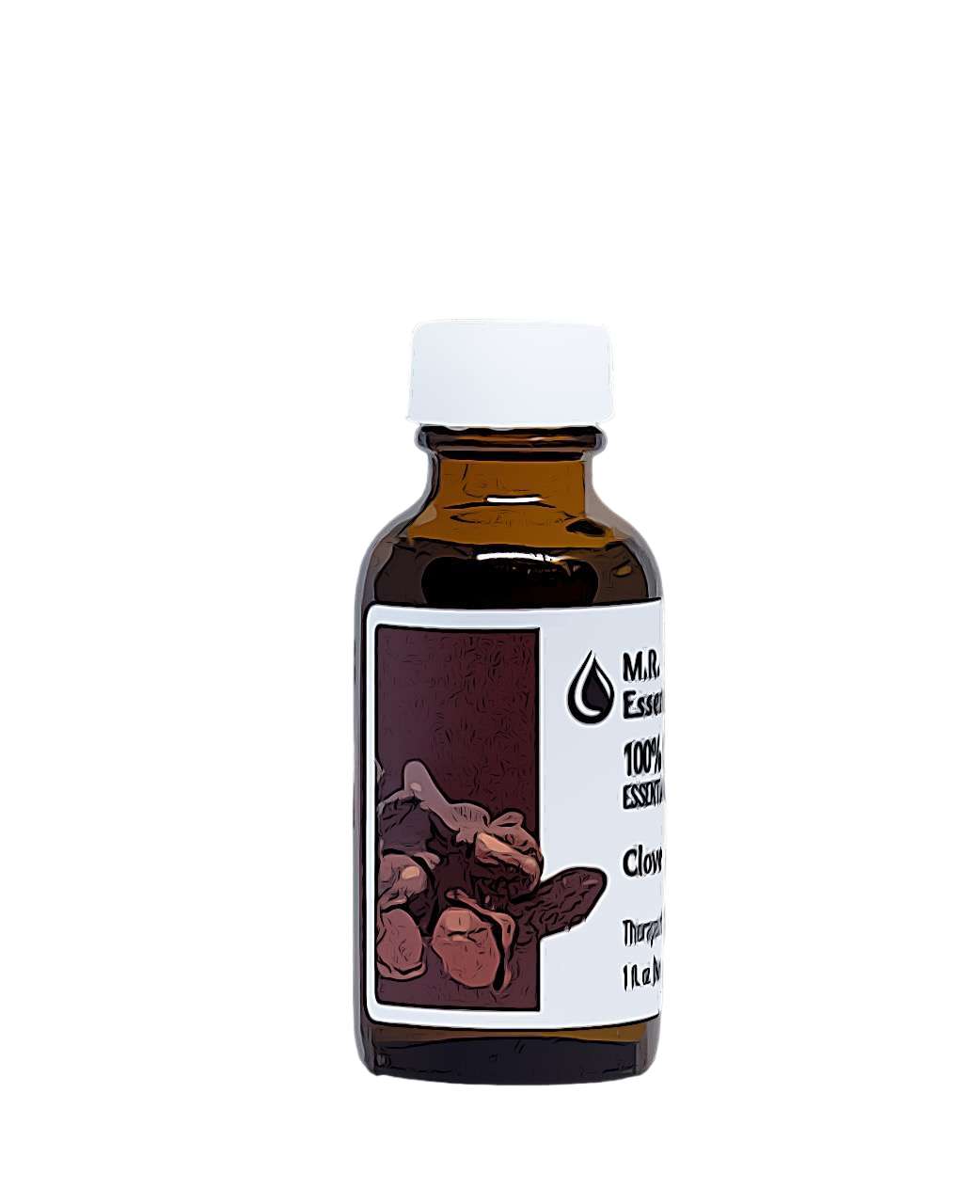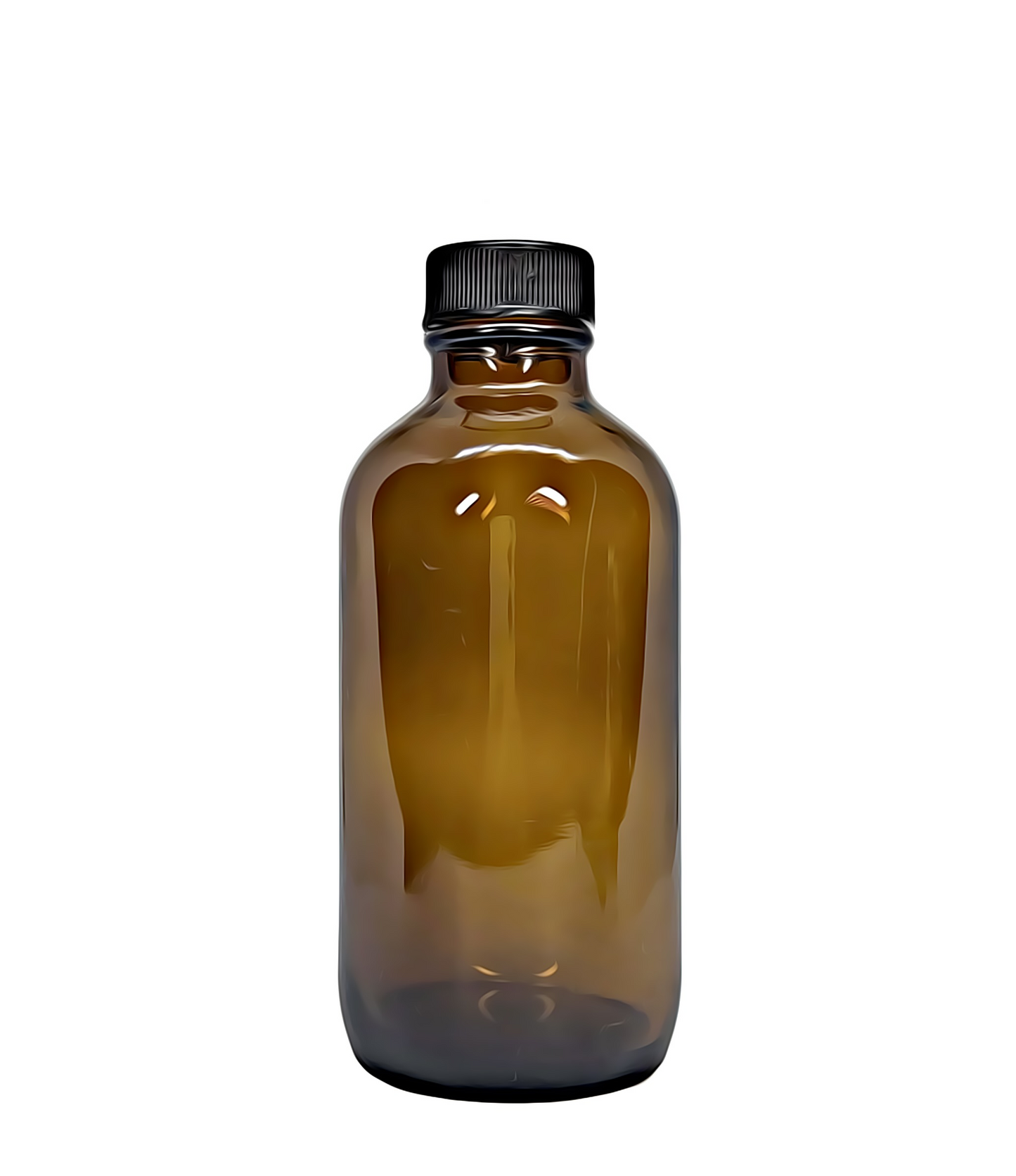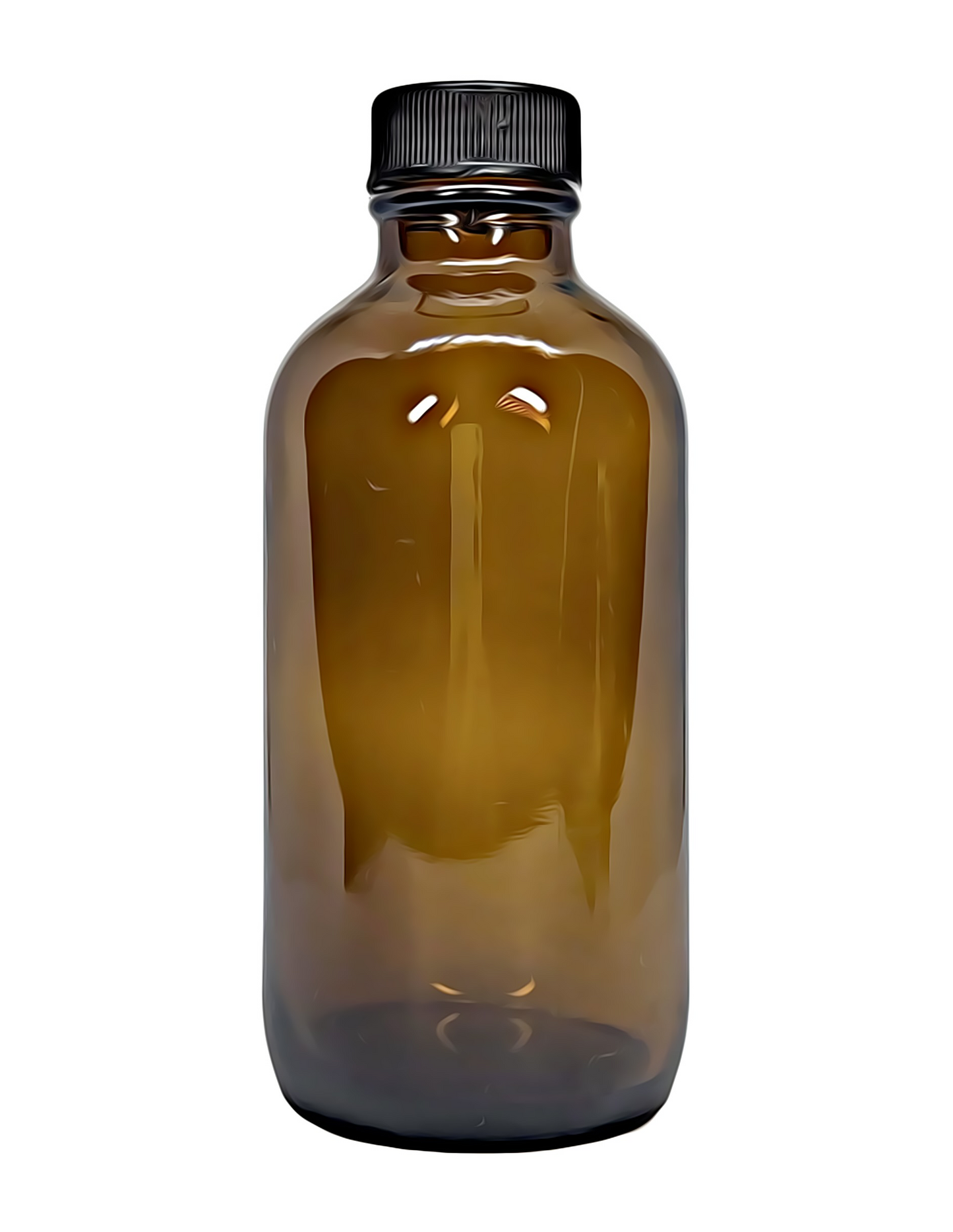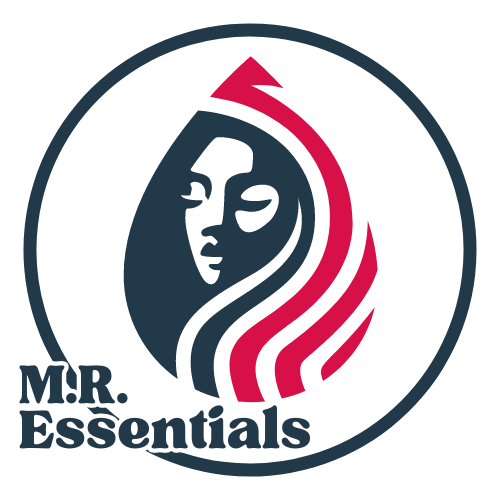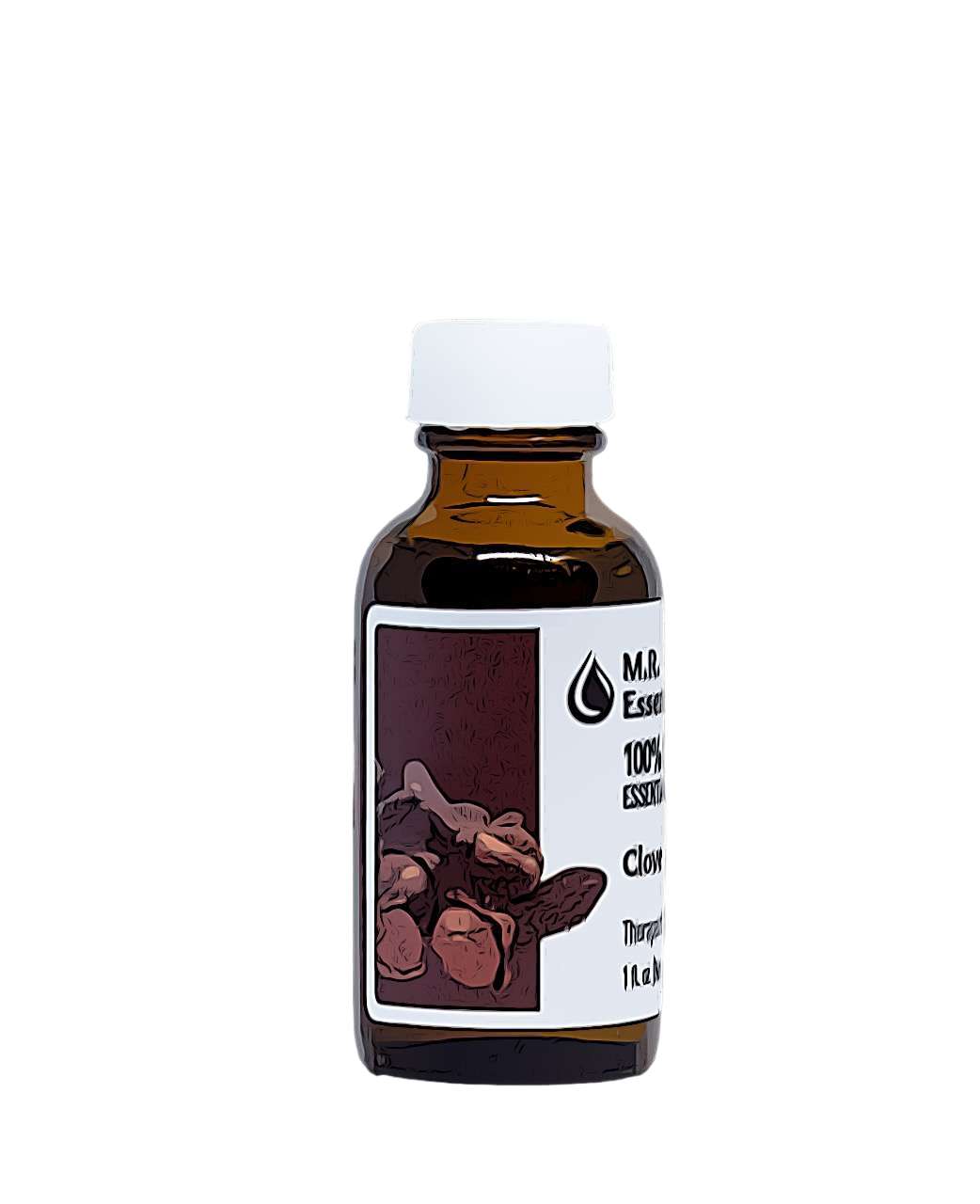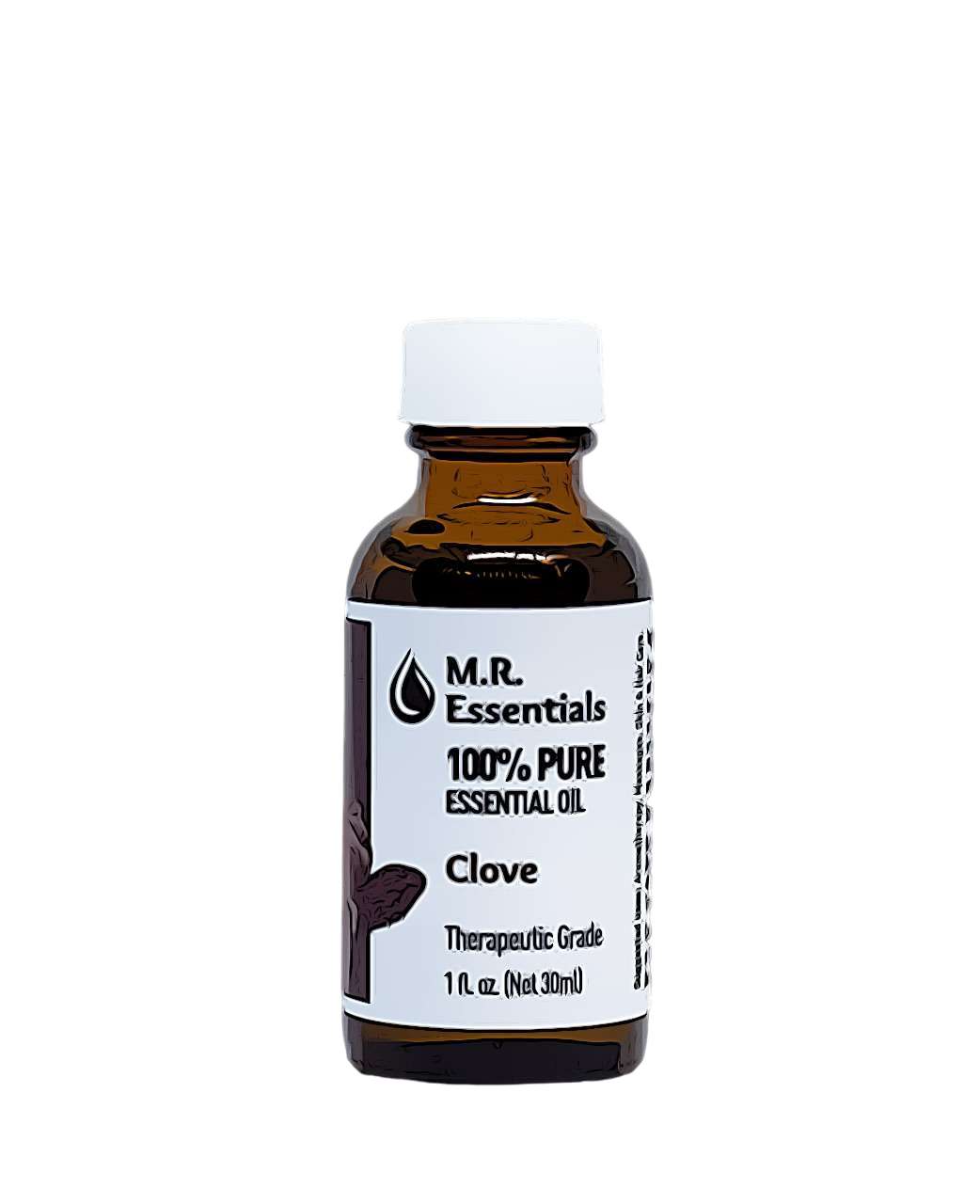MR Essentials
Clove Essential Oil (Syzygium aromaticum)
Clove Essential Oil (Syzygium aromaticum)
Couldn't load pickup availability
*The statements below have not been evaluated by the Food and Drug Administration. This product is not intended to diagnose, treat, cure, or prevent any disease.
Share
Product Details
Product Details
Method of Extraction: Steam Distillation.
Plant Part Used: Buds.
Color: Pale Yellow.
Consistency: Medium.
Aromatic Description
Aromatic Description
Perfumery Note: Middle.
Strength of Initial Aroma: Strong.
Aromatic Description: Spicy, warming yet slightly bitter. It is also slightly woody in character and is reminiscent in aroma to that of true clove buds but is of course much stronger in aroma.
Suggested Uses
Suggested Uses
• Cognitive support + brain health.
• Pain Relief.
• Bacterial + Fungal + Viral Skin Infection.
• Warts.
• Toothache.
• Gum Disease.
• Muscle Pain.
• Rheumatism.
• Flu.
• Bronchitis.
• Tired Limbs.
• Nausea.
• Flatulence.
• Stomach Cramp.
• Abdominal Spasm.
• Parasitic.
• Infection.
• Scabies.
• Ringworm.
Source: Dorene Petersen, Presentation: Clinical Use of Aromatherapy for Brain Health: 7 Essential Oils. August 9, 2017, New Brunswick, NJ. Alliance of International Aromatherapists 2017 Conference. AIA 2017 Conference Proceedings page 221-222.
Source: Valerie Ann Worwood, The Complete Book of Essential Oils and Aromatherapy, 25th Anniversary Edition (Novato, CA: New World Library, 2016, 581.
Dilution Guideline
Dilution Guideline
Adults: Usually, a 2-3% dilution is suitable, about 12-18 drops of essential oil per ounce of carrier oil.
Children (5-10), Frail Elderly, Sensitive Skin: A lower dilution of 1% or less (6 drops per ounce).
Facial or Sensitive Areas: Use a 0.5-1% dilution (3-6 drops per ounce).
Acute or Short-Term Use: For resolving a specific issue, a marginally higher dilution can be used for a period of 2-3 weeks as necessary.
Major Constituents
Major Constituents
Eugenol. B-Caryophyllene. Eugenyl Acetate. a-Caryophyllene. Isoeugenol. Methyleugenol.
Source: K.H. Kubeczka, Essential Oils Analysis by Capillary Gas Chromatography and Carbon-13 NMR Spectoroscopy, Second Edition. (Chichester: Wiley, 2002). B.M. Lawrence, Essential Oils 1979-1980 (Wheaton: Allured Publishing, 1981), 33-34. B.M. Lawrence, Essential Oils 1988-1991 (Wheaton: Allured Publishing, 1993), 36. Sources cited in Robert Tisserand and Rodney Young, Essential Oil Safety (Second Edition. United Kingdom: Churchill Livingstone Elsevier, 2014), 254.
Safety Information
Safety Information
Tisserand and Young indicate that when using Clove Bud Oil, there is moderate risk for mucous membrane irritation, may inhibit blood clotting and pose a drug interaction hazard.
It may cause embryotoxicity.
There is a moderate risk of skin sensitization, and Tisserand and Young recommend a dermal maximum of 0.5%.
They advise not to use topically on children age 2 or younger.
Reading Tisserand and Young's full profile is recommended. [Robert Tisserand and Rodney Young, Essential Oil Safety (Second Edition. United Kingdom: Churchill Livingstone Elsevier, 2014), 255.]
This essential oil poses a higher risk of causing irritation and sensitization when used in the bath. Avoid using it in the bath, even if it is solubilized/diluted.
